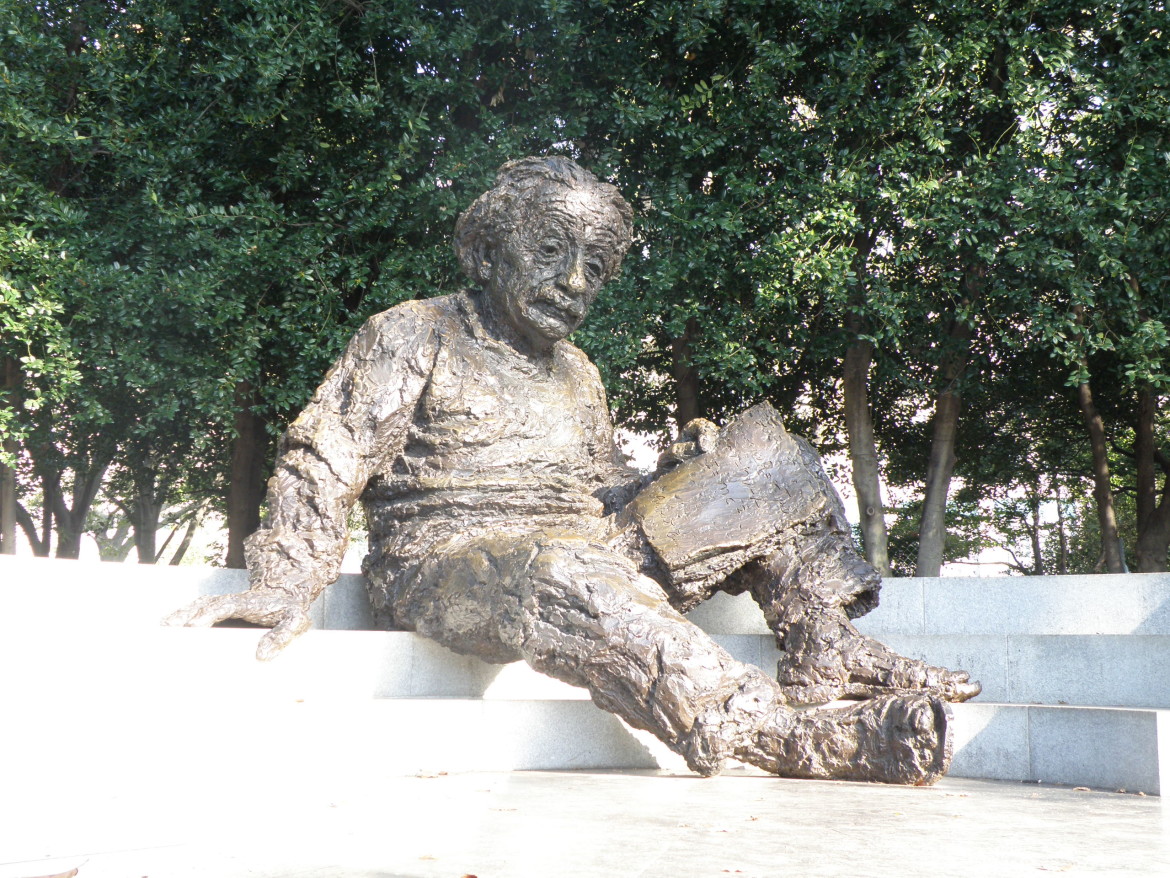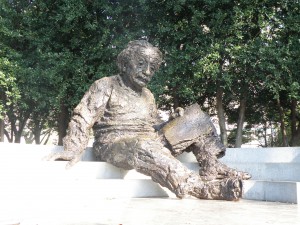
We set out to find Einstein the other day. We know he’s dead, but he has a beautiful monument down on the National Mall. And we wanted to try out geocaching with the new Dexter Industries dGPS sensor.
What is geocaching? Jojoguy gave us the idea after helping us develop the dGPS sensor. Geocaching.com describes it as:
Geocaching is a high-tech treasure hunting game played throughout the world by adventure seekers equipped with GPS devices. The basic idea is to locate hidden containers, called geocaches, outdoors and then share your experiences online. . . . There are 1,220,625 active geocaches around the world.
So there must be one near us. Turns out there is! And there’s one at the Einstein Memorial. It’s called “Everything is Relative”. So we wrote a quick software program in NXT-G, plugged in a dGPS sensor and a compass on our NXT, and set out.
We wrote this program (click for a larger link or download on our website):
The program takes GPS coordinates of the target you enter in decimal-degrees, gets the coordinates of its current position, and then calculates the distance the NXT is from the destination as well as the compass angle you are from the destination. It displays the direction you are headed so all you have to do is turn to make the angle to the destination the same as the compass. Keep the heading and direction the same and you’ll hit your destination.
The software also recorded the latitude and longitude of our location so we could go home and plot our course in Google Maps.
geocaching.com provided the GPS coordinates for Einstein. We found the degree decimal coordinates were 38.89238, -77.04872. With the software we wrote, it was easy to put those coordinates in as our destination.
We started out in beautiful Washington Circle, picked up a GPS signal, and used an NXT compass and the dGPS to find our way. It was so easy! Note that we got a GPS signal within a minute, even though we were in an urban environment.
We logged our path through the urban wilderness. We took the data, put it into Tables in Google and we had the path mapped out. You can see the path we took below:
You can do this too. See our tutorial on using the GPS sensor and Google Maps.
We logged the visit on the geocaching website (you can too, membership is free).
We also went ahead and added our own ghost geocache. It’s dedicated to another great physicist. You can find it here: 38.899371,-77.046597
Who’s the physicist, and for a bonus, how’s he related to Einstein?
2 Comments
-
I recently purchased a dgps sensor module from dexter industries.
I Need a robotc sample for robot navigation from point a to point b using the dgps and a compass. The nxt-G sample does me no good because it is not a computer programming language and I don’t understand it.-
Hello Joseph, We don’t have an example for that yet, but we will work on it.
-
Leave a reply
You must be logged in to post a comment.





